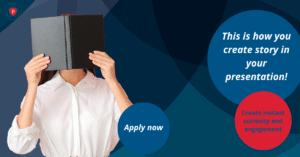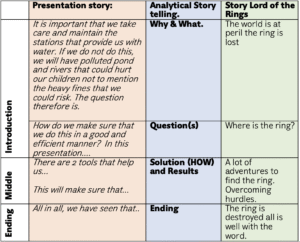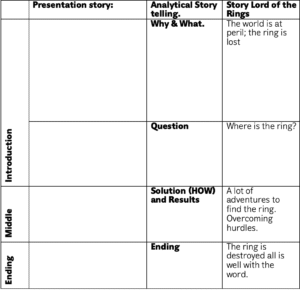“Beyond Beginning, Middle, End: Mastering Analytical Storytelling in Presentations”
Use a beginning, middle and ending. Was one of the 4 tips to create a story structure in your presentation in my last blog.
Now, let us have a closer look. And move beyond the simple beginning, middle and ending story structure and have a look at analytical story telling.
What would this look like in practice?
Find two presentation that start as a story as an example.
Example 1:
It is important that we take care and maintain the stations that provide us with water. If we do not do this, we will have polluted pond and rivers that could hurt our children not to mention the heavy fines that we could risk. The question therefore is, how do we make sure that we do this in a good and efficient manner? In this presentation….
Example 2:
It is important that we as employees and as a company empower ourselves digitally. Not only for us to stay informed keep up with times and become efficient, but also as a company to stay competitive. But how do we do this in a good way? In this presentation….
In a few sentences here the groundwork is set for a presentation based on story. Why?
The audience is immediately given the WHY and WHAT of your presentation. And logically from this why and what, the question follows. Which in turn arouses interest for the answer that will follow. And this unfolding, is the rest of the story. As simple and powerful as that.
Analytical storytelling, where this is based on, consist of 4 acts that make up a story. It starts with the WHY and WHAT, from that the question follows (the big, essential question), then the HOW follows, the hurdles that might be on the way and how to overcome them, the special tools that will help you. And then you end with the RESULTS. Followed by the ENDING.
See down below, 3 columns. On the left-hand side, how a presentation looks like, using analytical story telling. In the middle the structure of analytical storytelling and on the right, how a film like “Lord of the Rings” fits in this same structure.
Often this clear and engaging introduction is missing. Losing the opportunity to get the audience on board and bring story in our presentation. We often immediately dive into the content, without taking our audience along.
And if you start in a clear and engaging way, it is easier for the audience to follow you, they can place all the information better that will come. You will put them on the right track from the start.
It can be a few sentences, or a few paragraphs. As longs as a clear, WHY and WHAT is present in your introduction, and you follow with the clear key QUESTION you are on the right track.
See below an empty form, so you can give it a try yourself. Good luck!





